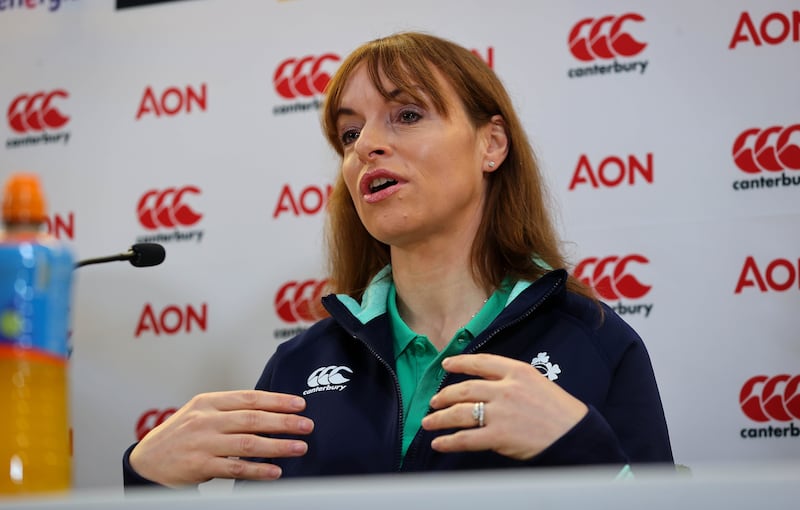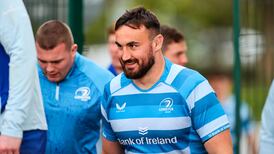Half of Ireland’s sporting bodies have achieved or exceeded the minimum female gender target of 40 per cent on their boards, a year in advance of the Government’s deadline.
But there are more than 20 sporting bodies who risk having their State funding reduced in a year’s time if they do not show serious progress towards achieving that target.
Sport Ireland’s latest women in leadership monitor has found that 33 of 66 national governing bodies (NGBs) have already achieved the target, which was set by Minister of State Jack Chambers 12 months ago.
He gave all NGBs two years’ warning to meet a 40 per cent minimum female quota, saying “there will be consequences in how we [financially] support these organisations by the end of 2023 if they don’t meet their target”. At that time, 39 NGBs had 30 per cent or more female representation on their boards.
Gerry Thornley: Remembering my uncle Johnny Hughes - the man I have most admired in my life
‘I was seven in 1975 when I committed myself to Leeds United, then I watched a great team fall apart’
Joe Canning: Cork had system failures in discipline and game management - they need a ruthless streak
Rural depopulation and holiday homes leave Clare GAA clubs struggling for numbers
Eleven of the 33 NGBs who have not yet reached 40 per cent are close, with their female board membership running at 33-38 per cent, including Athletics Ireland (38 per cent), which has six women on its 16-person board.
But the 17 NGBs who still have 20 per cent or fewer women on their boards include the so-called “Big Three”: the IRFU (13 per cent), FAI (17 per cent) and GAA (20 per cent) – as well as Ireland’s most successful Olympic sport, the Irish Athletic Boxing Association (17 per cent).
The latter’s female athletes are blazing a trail of international success, yet boxing only added a woman to their six-person board at their agm a fortnight ago when Fiona Hennigan was elected as one of the IABA’s two non-executive directors.
She is the president of the Connacht council and follows in the historic footsteps of former Leinster president Bernie Harold, boxing’s only previous female director.
Three years ago, 13 Irish sporting bodies did not have a single woman on their board, that is now down to one.
Snooker and Billiards Ireland still has an all-male 12-man board but is liaising with Sport Ireland and the Republic of Ireland Ladies Snooker Association in relation to what Sport Ireland said are “plans for closer collaboration of the two sporting bodies”.
The only other board that has fewer than 10 per cent female representation is Pitch and Putt Ireland, which has one woman on its 10-person executive.
It appears no coincidence that Sport Ireland now collates data on board gender balance as part of the core grant application process of NGBs.
Existing protocols and constitutions were legitimate obstacles to change in some sports but, in those cases, Sport Ireland wanted to see local and provincial recruitment pipelines and pathways adjusted to prove long-term commitment at national level.
GAA president Larry McCarthy made history in 2021 by selecting Prof Anne Looney to his Coiste Bainistí, making her the first female presidential appointee to his 19-strong management committee, which includes three more women: Helen O’Rourke (Ladies’ Gaelic Football Association), Sinead McNulty (Camogie Association) and Teresa Rehill.
The IRFU has three women (Su Carty, Fiona Steed and Yvonne Comer) on its 23-strong board, while the FAI has two women (Catherine Guy and Liz Joyce) on its 12-member board.

When gender quotas were first mooted, back in 2016, it was argued that even 30 per cent would be difficult because it could necessitate substantial constitutional change for some NGBs.
Sport Ireland’s women in sport lead Nora Stapleton said: “We’ve seen positive progress from a lot of sports. Last year we were looking at a target of 30 per cent and people were saying, ‘Sorry, that’s not possible’.”
“But since that’s been increased to 40 per cent, we already have 50 per cent of sports hitting it. When we first started examining this it wasn’t really on a lot of sports’ agendas, but now they realise how important it is. There’s definitely been a shift in mentality. People are not just doing it to tick a box.
“Research in business and so many areas globally has shown the benefits of having more women on boards. People now recognise it as best practice.
“We’ve seen NGBs where, constitutionally, a male board member has had to step down to allow a female member to come through. If you’ve been volunteering in your sport for a very long time and doing an excellent job on your board, for you to say, ‘I believe we need change and I’m willing to make way’, that is a very brave and positive thing to do and see,” she said.
“Sport Ireland is here to support and guide those who haven’t yet hit the 40 per cent target to find a solution, but the main thing is that they have outlined steps that they are trying to take. That’s what we have to see from all sports.”
The average percentage of women across all Irish sporting boards is now 36 per cent, which marks a rise of 4 per cent in the past year and an improvement of 12 per cent since Sport Ireland started monitoring it in 2019.
The sports with most women on their boards are the Baton Twirling Sport Association of Ireland (75 per cent), Community Games (67 per cent), the Camogie Association (65 per cent), Volleyball Ireland (63 per cent), the Irish Wheelchair Association Sport (63 per cent), Hockey Ireland (60 per cent), Fencing Ireland (60 per cent) and the Irish Waterski and Wakeboard Federation (60 per cent).
Paralympics Ireland’s board is 56 per cent female, Sport Ireland’s own board is 55 per cent and the board of the Olympic Federation of Ireland is 43 per cent.
A dozen sporting bodies have a female president, 30 per cent with female chief executives (up 2 per cent from last year) and 15 per cent of boards have a female chairperson.














